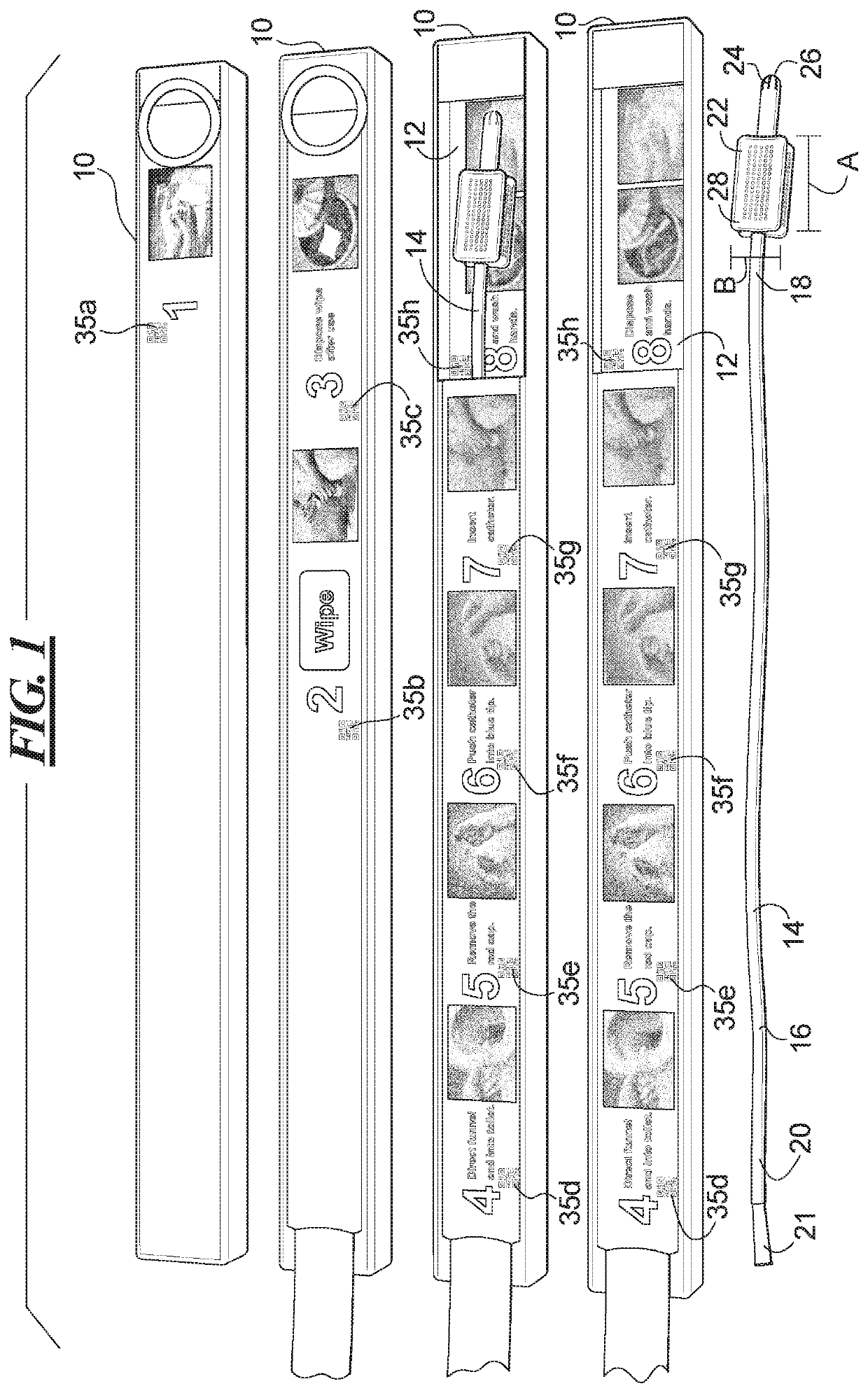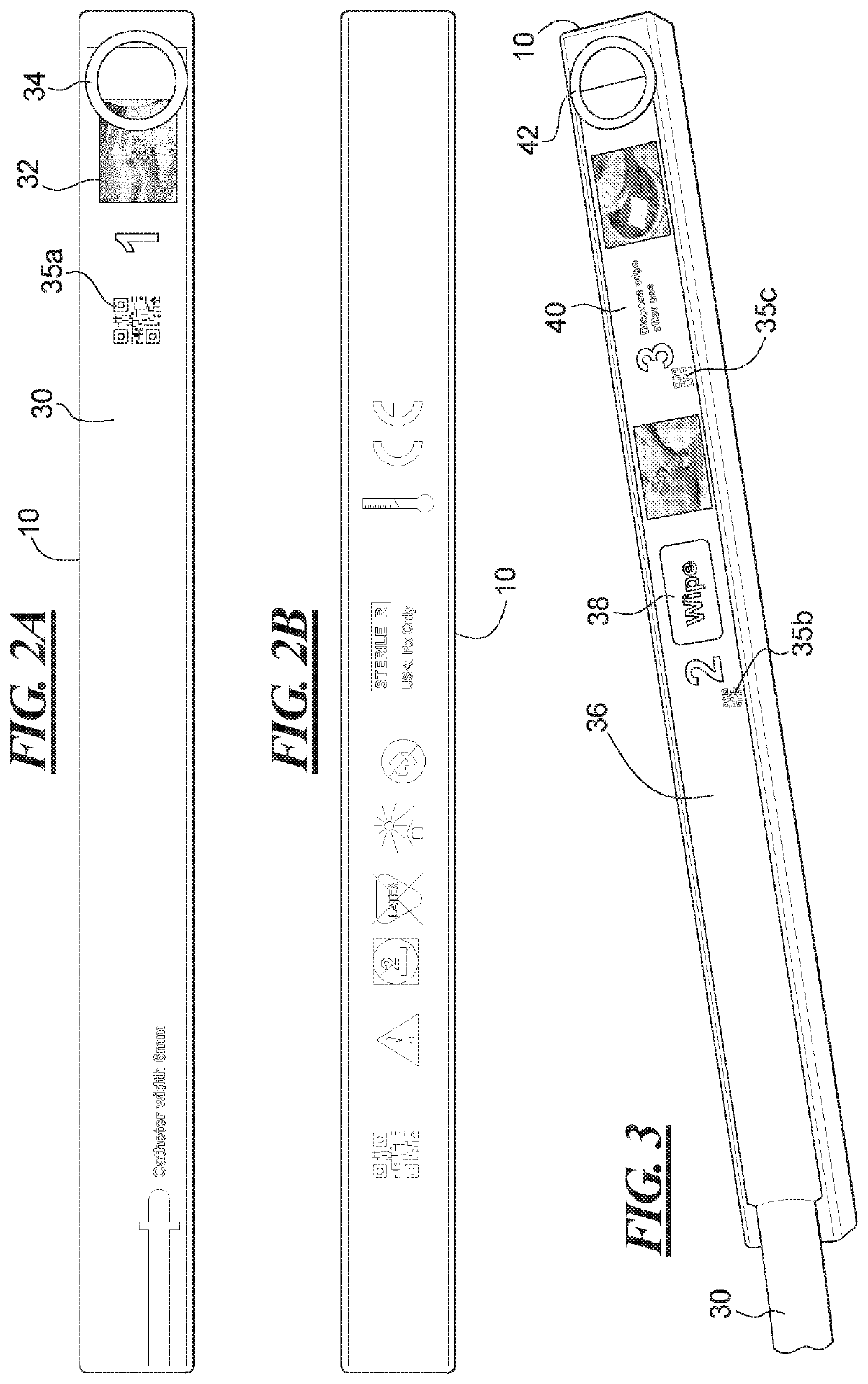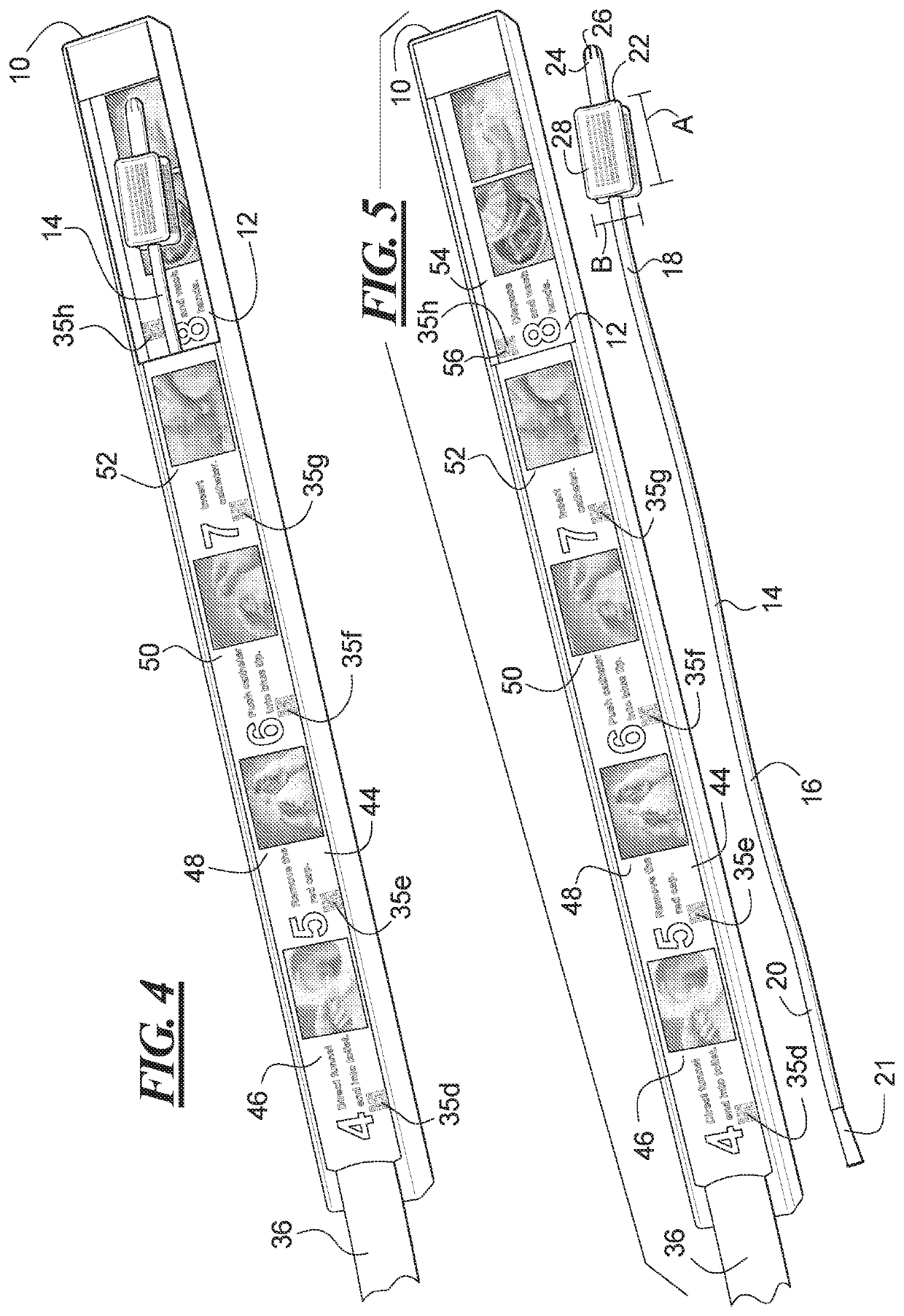Introduction to self-catheterization kit
- Summary
- Abstract
- Description
- Claims
- Application Information
AI Technical Summary
Benefits of technology
Problems solved by technology
Method used
Image
Examples
Embodiment Construction
[0016]The embodiments disclosed herein are for the purpose of providing a description of the present subject matter, and it is understood that the subject matter may be embodied in various other forms and combinations not shown in detail. Therefore, specific embodiments and features disclosed herein are not to be interpreted as limiting the subject matter as defined in the accompanying claims.
[0017]An exemplary packaging assembly 10 for a self-catheterization kit is shown in FIGS. 1-5. FIG. 1 illustrates the packaging assembly 10 at each progressive step in the catheterization process. The packaging assembly 10 reveals the proper or suggested order of contamination-free self-catheterization and may be particularly useful in a training regimen for new catheter users. For example, a healthcare professional may provide initial in-person training to the user regarding the proper or suggested steps for intermittent self-catheterization. The user may then be provided with a supply of trai...
PUM
 Login to View More
Login to View More Abstract
Description
Claims
Application Information
 Login to View More
Login to View More - R&D
- Intellectual Property
- Life Sciences
- Materials
- Tech Scout
- Unparalleled Data Quality
- Higher Quality Content
- 60% Fewer Hallucinations
Browse by: Latest US Patents, China's latest patents, Technical Efficacy Thesaurus, Application Domain, Technology Topic, Popular Technical Reports.
© 2025 PatSnap. All rights reserved.Legal|Privacy policy|Modern Slavery Act Transparency Statement|Sitemap|About US| Contact US: help@patsnap.com



